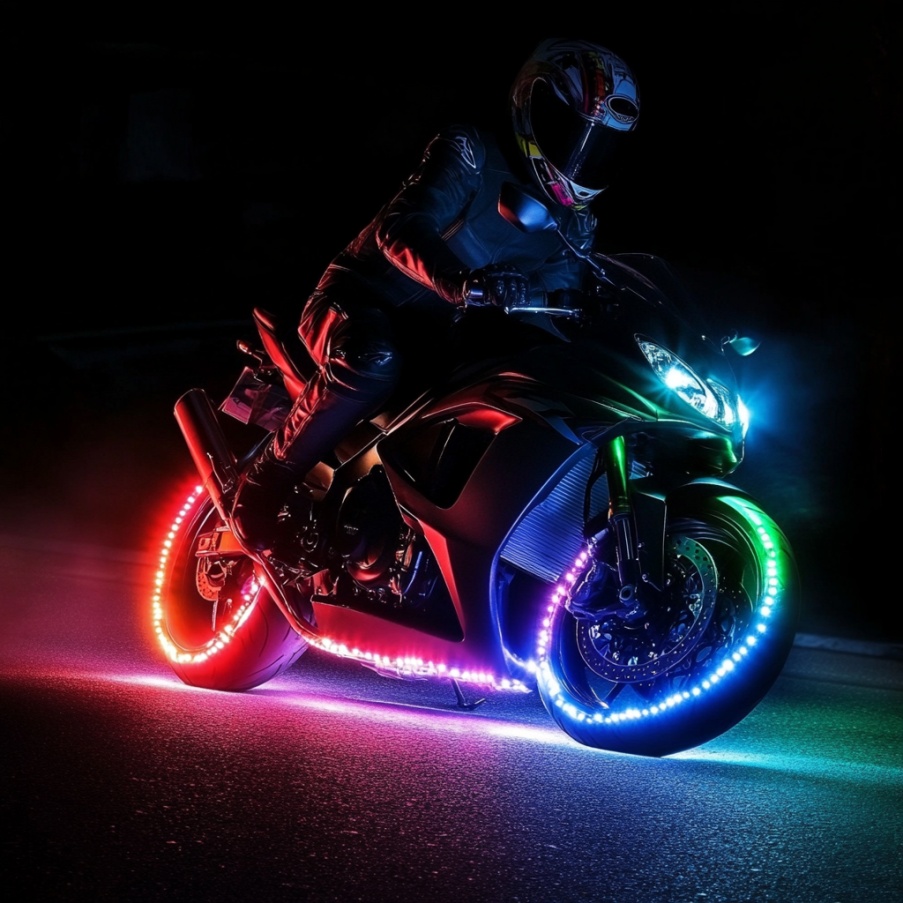About LED
How to Use LED Strips for Your Vehicles?
LED strips are a popular and versatile lighting solution for many applications, and they’re increasingly being used to enhance the aesthetics and functionality of vehicles like buses, cars, and motorcycles. Whether you're looking to improve visibility, create eye-catching accents, or add a unique touch to your vehicle’s interior or exterior, LED strips are an excellent choice.
In this blog post, we'll explore how you can use LED strips for vehicles, the benefits they offer, and some key tips for ensuring a safe and efficient installation.
Why Choose LED Strips for Vehicles?
Before diving into installation, let’s take a moment to highlight the advantages of using LED strips in vehicles:
1. Energy Efficiency
LED technology consumes very little power compared to traditional incandescent lights, making them an energy-efficient option for your vehicle’s lighting needs. This is particularly important for vehicles like buses and motorcycles that operate for extended hours.
2. Durability
LED strips are highly durable and resistant to vibrations, which makes them an ideal choice for vehicle applications. Whether it’s a bumpy road or off-road terrain, LED strips can withstand the conditions and continue to operate smoothly.
3. Customizable
LED strips come in a range of colors, lengths, and configurations. Whether you want to accentuate the interior of a car or add a dynamic lighting effect to the exterior of a motorcycle, the options are limitless.
4. Long Lifespan
LEDs are designed to last for many years, which means fewer replacements and long-term savings. A longer lifespan is particularly beneficial for vehicle lighting, where frequent bulb replacements can become a hassle.

Where to Use LED Strips in Vehicles?
1. Interior Lighting
LED strips are commonly used to enhance the interior of vehicles by adding a sleek, modern look. Here are some popular uses:
l Dashboard Accents: Adding LED strips under the dashboard or around the instrument panel can create a cool, modern lighting effect.
l Footwell Lighting: Install LED strips under the footwells to provide ambient lighting, making the interior feel more luxurious and comfortable.
l Ambient Lighting: Enhance the cabin experience with LED strips placed around seats or door panels to create a calming or dynamic lighting atmosphere.
Tip: Use RGB LED strips for customizable interior lighting. You can change the color depending on your mood, and some systems even allow remote control or app-based adjustments.
2. Exterior Lighting
LED strips are also a popular choice for vehicle exterior lighting due to their ability to create eye-catching effects, improve visibility, and increase safety. Here are some ways to use them:
l Underbody Lighting: One of the most popular exterior uses of LED strips is for underbody lighting on cars, motorcycles, and buses. These LED strips are typically mounted along the chassis to create an illuminated glow that enhances the vehicle’s appearance at night.
l Wheel Rim Lighting: LED strips can be installed around wheel rims to give the vehicle a futuristic look. This type of lighting is especially popular with motorcycles and sports cars.
l Grille or Headlight Accents: Use LED strips to highlight the grille or headlights. This adds a custom look and increases visibility, especially for larger vehicles like buses.
l Side Markers and Tail Lights: Enhance your vehicle’s safety features by adding LED strips to side markers and tail lights. This can help with visibility for both night driving and during poor weather conditions.
3. Motorcycle Lighting
For motorcycles, LED strips can be a game-changer in terms of both aesthetics and safety. Some great uses include:
l Wheel Accents: LED strips can be wrapped around motorcycle tires or rims for a cool glowing effect.
l Frame and Engine Highlights: Enhance the look of your motorcycle by adding LED strips along the frame or engine parts, creating a high-tech, stylish glow.
l Underseat Lighting: Install LED strips under the seat for added illumination when parked or to increase visibility at night.
Tip: For motorcycles, opt for waterproof and shockproof LED strips, as they will be exposed to weather conditions and vibrations during rides.

How to Install LED Strips on Vehicles?
Step 1: Choose the Right LED Strips
Ensure that the LED strips you choose are designed specifically for automotive use. Look for strips that are waterproof, vibration-resistant, and capable of handling the voltage of your vehicle’s electrical system.
l For exterior applications, make sure the strips are IP65 or higher for weatherproofing.
l For interior applications, you can use LED strips with lower IP ratings, but ensure they’re durable enough for long-term use.
Step 2: Plan the Layout
Before installing, plan the layout for the LED strips. Measure the areas where you want to install them, such as under the dashboard, footwells, or along the vehicle's exterior. Ensure that the strips are long enough to cover the desired area but not so long that they interfere with any moving parts or vehicle components.
Step 3: Clean the Surface
Proper adhesion is key for a long-lasting installation. Clean the installation area with a mild cleaner to remove any dirt, oil, or grime. This will help the adhesive on the back of the LED strip stick securely.
Step 4: Wiring and Power Supply
Connect the LED strips to a power supply. Most vehicle LED strips are powered via a 12V DC connection. If you're installing multiple strips, make sure your power source can handle the total wattage. You can use a fuse or relay to prevent overloading the vehicle's electrical system.
Step 5: Install the LED Strips
Peel off the adhesive backing on the LED strips and apply them to the desired area. For more secure installation, you can use small zip ties or mounting brackets. Once everything is securely attached, connect the wiring and test the lights.
Tip: For an added touch of customization, consider installing a remote control or a smartphone app to control the color and brightness of your LED strips.
Safety Considerations for Vehicle LED Installations
While LED strips are generally safe, it’s important to follow these guidelines:
l Ensure proper wiring to avoid short circuits.
l Use a fuse or relay to protect the vehicle's electrical system.
l Secure loose wires to prevent any interference with vehicle operation or moving parts.
l For exterior lights, ensure that the LED strips are waterproof and can handle exposure to rain and dirt.
Conclusion
LED strips are an excellent way to enhance the appearance and functionality of buses, cars, and motorcycles. From interior lighting that adds a modern touch to exterior lighting that increases visibility and safety, LED strips offer limitless possibilities for vehicle customization.
If you're a B2B buyer looking to provide high-quality, customizable LED strips for your customers, our extensive range of automotive-grade LED products can help you meet your clients' needs. With options for both interior and exterior applications, we offer the perfect solutions to enhance any vehicle.
Contact us today to learn more about our LED strip options for vehicles, and get started on your next lighting project!
Looking for more automotive lighting tips? Check out our blog for additional insights into customizing vehicle lighting with LED technology.
LEDFOCUS is a dedicated LED strip lighting manufacturer based in Shenzhen, China. Since our establishment in 2011, we have been committed to the design, development, and production of high-quality LED strip lighting products. With over a decade of industry experience, LEDFOCUS has become a trusted B2B partner for customers across Europe, the USA, the Middle East, and Southeast Asia.
Contact us (www.ledfocus.cn) today for free samples, product catalogs, or to discuss your upcoming project needs.
RELATED NEWS
- What Is a Wall Washer LED Strip and Where Can It Be Used? 2025-07-03
- LED Strip Lighting for Digital Signage: A Bright Solution for Modern Displays 2025-07-02
- Is Neon Flex Better for Outdoor Use Than LED Strips? Here’s Why 2025-06-13
- How to Prevent Voltage Drop in Long LED Strip Installations? 2025-06-06
- Are LED Strips Better Than Neon Flex for Lighting Projects? A Detailed Compariso 2025-05-30
CATEGORIES
LATEST NEWS
CONTACT US
Contact:
Phone: +86 13751043522
E-mail: jessica@ledfocus.cn
Whatsapp:+86 13751043522
Add: 983-984, Building B, Qinghu Industrial Park, Qingxiang Road, Qinghu Community, Longhua Street, Longhua District, Shenzhen, China